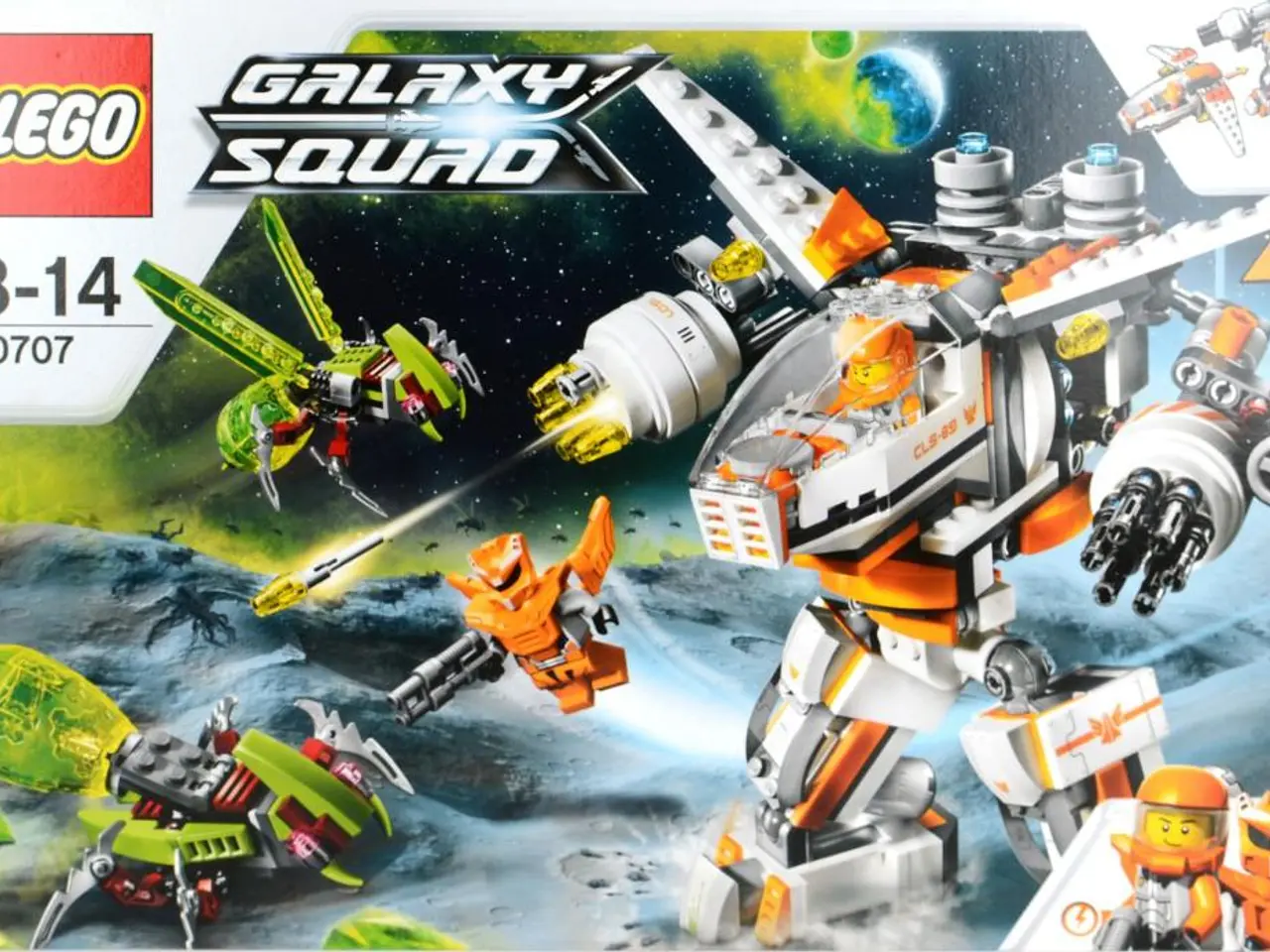Stock decline of AST SpaceMobile due today reasons explored
AST SpaceMobile, a rapidly advancing space startup, is making strides towards providing global 5G connectivity through a space-based cellular broadband network accessible directly by standard smartphones. The company has seen significant growth and progress in the first half of 2025, marked by strategic partnerships, spectrum acquisitions, and debt reduction efforts.
Stock Soars as Investor Optimism Grows
AST SpaceMobile's stock soared 121.5% in the first half of 2025, reflecting strong business results and investor optimism about the space industry's growth. The company's shares, traded under the ticker symbol ASTS, have however seen a decrease of more than 17% due to slower progress than some investors had anticipated.
Spectrum Acquisitions for Enhanced Connectivity
In a bid to increase network capacity and reliability, AST SpaceMobile secured new licenses for L-Band wireless spectrum extending over 80 years. This move allows the company to utilize frequency channels for its satellite cellular broadband service. The company also recently agreed to acquire Global S-Band spectrum for $64 million, a deal expected to close in H2 2025, adding 60 MHz of valuable mid-band spectrum for enhanced connectivity.
Strategic Partnerships and Collaborations
AST SpaceMobile has established strategic partnerships that are key to its growth. One such partnership is with Vodafone Idea (Vi) in India to deploy its satellite network integrated with terrestrial networks, enabling direct smartphone connectivity in one of the world’s largest telecom markets with 1.1 billion subscribers. The company has also collaborated with Fairwinds Technologies for defense applications of space-based mobile broadband.
Debt Reduction and Future Plans
AST SpaceMobile has made efforts to reduce its debt, retiring $225 million of convertible notes in 2025 to fund R&D and support long-term growth. The company is preparing for a quarterly business update on August 11, 2025, to discuss financial results and business progress, showing transparency and ongoing investor engagement. AST SpaceMobile is focused on scaling its satellite constellation and expanding global coverage to eliminate connectivity gaps for billions of unconnected mobile users worldwide.
While the company faces competition from SpaceX’s Starlink and Globalstar in the satellite communications sector, AST remains unique in targeting direct-to-standard-phone connectivity without special devices. The testing of AST SpaceMobile's systems continues, with potential for things to go wrong, and the cost of getting the network up and running is prohibitive. However, download signal strengths necessary to hit 5G have been observed during testing of BlueWalker 3 system, validating the design roadmap for their BlueBird commercial satellites.
Investors are advised to keep AST SpaceMobile as a small piece of a well-diversified portfolio. The company ended the quarter with liquidity of $239 million, and despite not generating any revenue in the fourth quarter, it reported a net loss of $8.23 million, an increase from a loss of $3.11 million a year ago. AST SpaceMobile hopes to launch satellites beginning in the first quarter of 2024, and continues to operate in a risky environment due to the complex nature of space. The testing and deployment of its network remains a risk, as not all ideas in space may work.
Investors are keenly interested in AST SpaceMobile due to its focus on space-based cellular broadband, as this technology has the potential to revolutionize global 5G connectivity. The company's recent acquisition of Global S-Band spectrum for $64 million, coupled with partnerships with Vodafone Idea in India and Fairwinds Technologies, signifies strategic moves to enhance its network and solidify its position in the space industry. AST SpaceMobile's plans for reducing debt and launching satellites, such as BlueBird commercial satellites, demonstrate a commitment to long-term growth and growth in finance and technology, even amidst competition and the challenges associated with space exploration.




